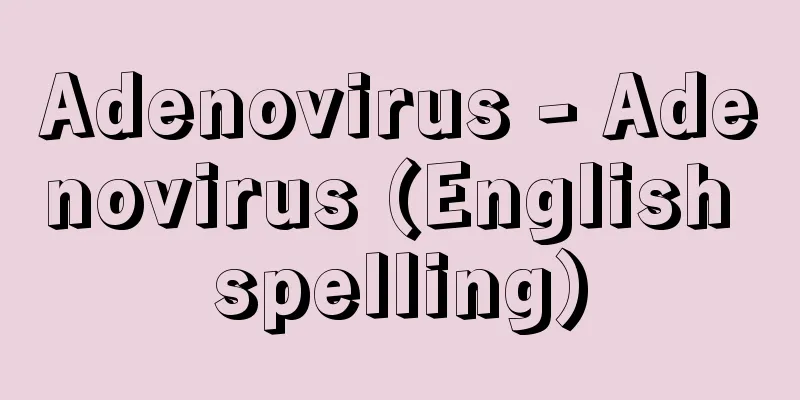Kakuban - Kakuban

|
A Shingon Buddhist monk from the late Heian period. A native of Hizen (Saga Prefecture). A descendant of Taira no Masakado. Born on June 17, 2nd year of Kaho. He studied Yogacara, Sanron, and Esoteric Buddhism at Ninnaji, Daigoji, Nanto, and Koyasan. At the end of the Hoan era (1120-1124), he was invited to live at Jinguji Temple in Ishite, Kii (Wakayama Prefecture), and at the beginning of the Daiji era (1126-1131), he changed the temple's name to Denpoin and appointed 36 scholars. As Mt. Negoro was narrow, he built Daidenpoin Temple on Mt. Koya and held his first Denpo Daie (Dempo Convention) in 1132 (Chosho 1) with the attendance of the retired Emperor Toba. In 1134, he became the head priest of both Daidenpoin Temple and Kongobuji Temple and attempted to govern the entire Mt. Koya, but due to resistance from the monks of Kongobuji Temple, Toji Temple, and Daigoji Temple, he resigned the following year in 1135 and retired to Mitsugonin Temple. In 1140 (Hōen 6), Mitsugonin Temple was destroyed by the monks of Kongobuji Temple, so he retreated to Mt. Negoro and built Enmyo-ji Temple, where he would die. He perfected the practice of Shingon Buddhism, which had been subdivided into various schools, founded the Daidenpoin school, and became known as the founder of Shingi Shingon. He passed away on December 12, 2nd year of the Koji era. He was given the title of Jisho Daishi, but this title was discontinued due to opposition from Mount Hiei. He was given the posthumous title of Kokyo Daishi. He wrote many works, including "Mitsugon Shohisyaku" and "Gorin Kuji Himitsu Gisyaku." [Yoshinobu Nakao, June 20, 2017] [Reference item] | |Source: Shogakukan Encyclopedia Nipponica About Encyclopedia Nipponica Information | Legend |
|
平安後期の真言宗の僧。肥前(佐賀県)の人。平将門(たいらのまさかど)の末裔(まつえい)。嘉保(かほう)2年6月17日に生まれる。仁和寺(にんなじ)、醍醐寺(だいごじ)、南都、高野山(こうやさん)で、唯識(ゆいしき)、三論(さんろん)、密教を学ぶ。保安(ほうあん)(1120~1124)の末、請われて紀伊(和歌山県)石手(いわて)の神宮寺に住し、大治(だいじ)(1126~1131)の初め、寺号を伝法院(でんぽういん)と改め、学侶(がくりょ)36人を置いた。この根来山(ねごろさん)は狭隘(きょうあい)であったので、高野山に大伝法院を建立し、1132年(長承1)鳥羽(とば)上皇の臨幸を得て、初めて伝法大会(でんぽうだいえ)を行った。1134年、大伝法院と金剛峯寺(こんごうぶじ)の両座主(ざす)を兼ね、高野山全体を統轄しようとしたが、金剛峯寺、東寺、醍醐寺の衆徒の反抗で、翌1135年辞して密厳院(みつごんいん)に退居した。1140年(保延6)金剛峯寺衆徒によって密厳院が破却されたので、根来山に退いて円明寺(えんみょうじ)を建て、終焉(しゅうえん)の地とした。彼は諸流細分した真言の事相(じそう)を大成し、大伝法院流を創唱して、新義真言の祖とされた。康治(こうじ)2年12月12日示寂(じじゃく)。自性(じしょう)大師の号を賜るが、叡山(えいざん)の反対で停止(ちょうじ)。興教(こうきょう)大師と勅諡(ちょくし)された。『密厳諸秘釈(みつごんしょひしゃく)』『五輪九字秘密義釈』など撰述(せんじゅつ)が多数ある。 [中尾良信 2017年6月20日] [参照項目] | |出典 小学館 日本大百科全書(ニッポニカ)日本大百科全書(ニッポニカ)について 情報 | 凡例 |
<<: Nuclear reaction - agitator
Recommend
Ministry of Internal Affairs
A central government agency that was responsible ...
Orix BlueWave
The name of the predecessor team of the Japanese p...
Correctional education - Kyoseikyoiku
Legally, it means the education given to juvenile...
ILP (Industrial Liason Program)
"ILP" is an abbreviation for Industrial ...
Strait of Dover
A strait between the UK and France. Its French na...
Epact (English spelling)
A number indicating the age of the moon on a certa...
Oil sands - Oil sand
This refers to sand that contains viscous hydroca...
"Eifukumon'in's Poetry Contest"
…After her husband's death, she tutored Emper...
Gambir (plant) - Gambir
…A climbing woody plant of the Rubiaceae family (...
Arita mandarin oranges - Arita mandarin oranges
…Since early modern times, mandarin oranges have ...
Cabo Verde (English spelling)
Official name: Republic of Cabo VerdeRepública de ...
unloader
…Bridge cranes are widely used in outdoor materia...
Freaky
...This is interpreted as meaning a solar eclipse...
Mr. Ishikawa
A Fudai Daimyo family in the Edo period. Its ance...
Electron beam - Denshisen
[ I ] A beam of free electrons emitted into a vac...









